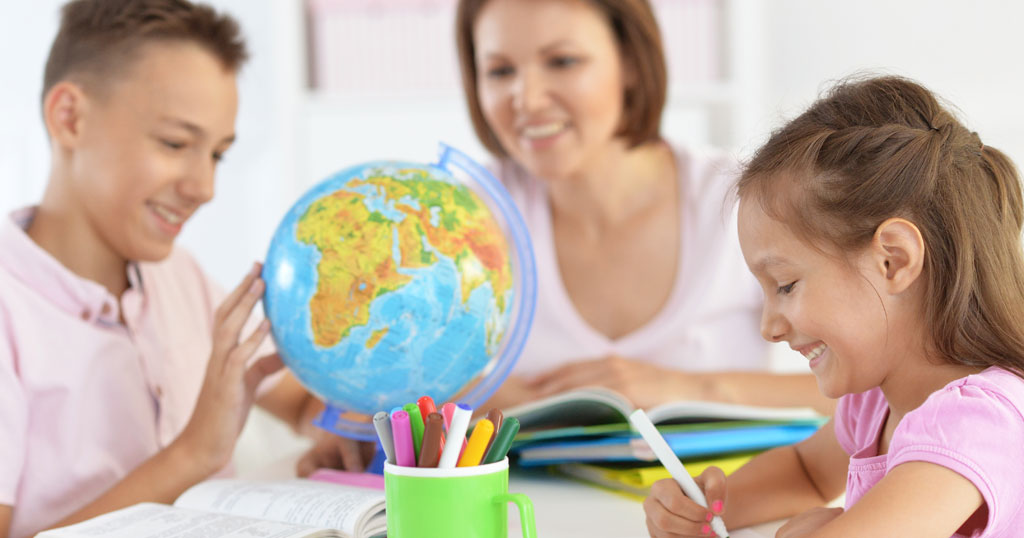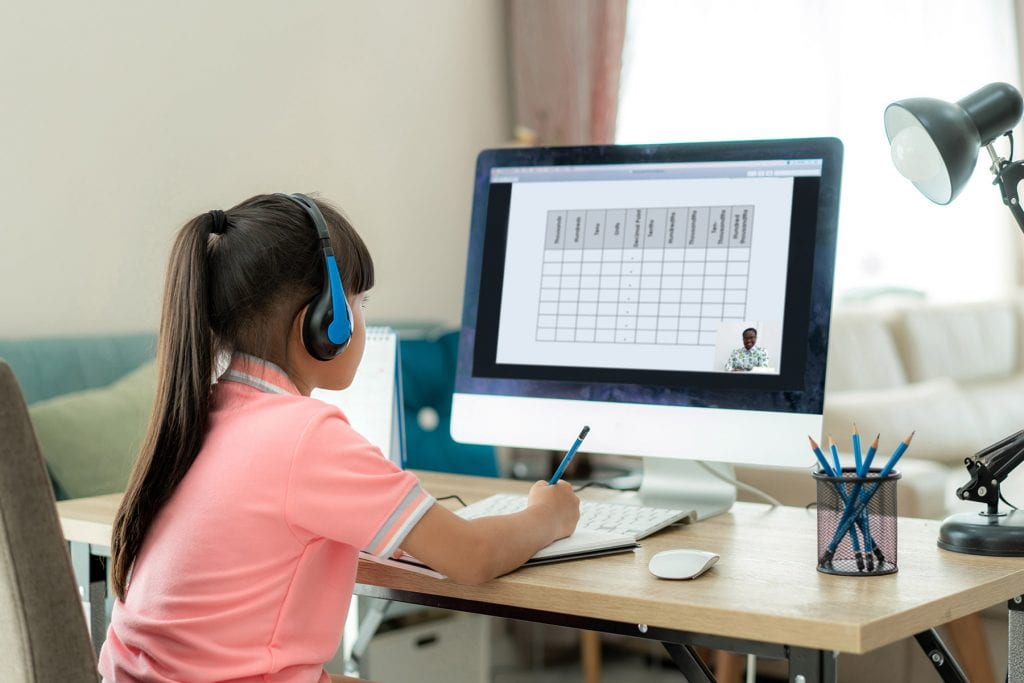World Maths Day on 3rd March aims to get children excited about maths. Here we share some easy, active maths games that you can do at home on World Maths Day – or at any time you have a couple of minutes to spare.
1. Beach ball sums
Cover a beach ball in sticky labels and write a sum on each. Sums could be addition, subtraction, multiplication, division, fraction calculations – anything that’s appropriate for your child. For ideas use the internet by typing in your child’s key stage and ‘maths worksheets’ (for example: ‘key stage 3 maths worksheets’).
To play, throw the beach ball to your child and whichever sum their right thumb lands on they answer. Throw back and forth until they’ve answered most of the sums.
2. Calculator jump
Outside, chalk a grid (3 squares down and four across) that looks a bit like a calculator keypad. In the first row of squares write 7, 8, 9, -. In the second row write 4, 5, 6 +, and then 1, 2, 3, = in the last row. You could substitute the plus and minus signs for multiplication and division.
Children then make up their own sums (or you tell them a sum). They jump to the numbers, signs and answers. For example they might jump to 7, +, 1, =, 8.
3. Hopscotch
Play traditional hopscotch (if you’re not sure how to play look online for instructions). As your child lands on a number ask them to tell you the number that is one less/one more/two more/two less than that number.
Adapt the game to an appropriate level for your child. You might ask ‘What’s ten more?’ or ‘What number would you get if you added 21?’ As with the beach ball game, you could look on the internet to find ideas for sums.
4. Playing card calculations
To play this game you could either just use playing cards with numbers on them or include the picture cards and assign numbers to them (ace = 1, jack = 11, queen = 12, king = 12).
Divide the cards between two players. Each player lays two cards face up in front of them and then subtracts the lower number from the higher. The person who has the higher answer wins all four cards. If the total is the same, then the players turn over two more cards.
Make the game more challenging for older children by using the two cards to make a fraction. Whoever has the biggest fraction wins the cards.
5. Simon Says
Play the traditional game ‘Simon Says’ but with maths actions appropriate for your child. For younger children learning fractions and telling the time instructions could be: spin your body (or turn your head) clockwise, spin anti-clockwise, make a quarter turn, make a half turn, take two steps left (or hop two steps left), take two steps right.
Older children could make angles using their arms: acute, right, obtuse, 90 degree, 180 degree, parallel and perpendicular lines.
6. Skittles maths
Give your child a bag of Skittles. Before they eat them ask them to count each colour and record their results in a bar graph.
Older children could calculate the ratio of each colour to the total number of Skittles in the packet.
7. Times table catch
Throw a ball back and forth with your child, taking turns to say a times table. For example, you could count in 2s. When you have the ball you say ‘two’, when your child catches and throws the ball to you they say ‘four’, as you catch and throw the ball back you say ‘six’ and so on.
8. Twister recognition
For this game you need a Twister board. Place stickers over the circles. On the stickers draw different shapes (Google ‘shapes key stage 1’ or ‘shapes key stage 2’ to find appropriate shapes).
Play Twister in the ordinary way but call out ‘right foot triangle’ etc. You could ask your child to identify shapes by their corners and sides by saying, for example: ‘place your right foot on the shape that has three corners and three sides’.
Instead of shapes, children could identify fractions or money. You could write fractions on the stickers or use pictures of coins from the internet.
9. Weigh it
This activity supports your child to make predictions and to use scales.
Pick ten random items from your kitchen – a bunch of bananas, a tin of soup etc. Ask your child to predict the order of weight by placing the items in a line from lightest to heaviest. They then test their answers by weighing the items.
10. World probability
For this game you need an inflatable globe. Throw and catch an inflatable globe with your child fifty times. Each time you and your child catch the ball record whether your or their left thumb landed on water or land.
When you’ve finished the game, record the ratio. As 70% of the world is covered in water, the result will probably be around 7:3. Based on this ratio ask your child to predict the probability that your or their thumb will land on any of the continents if you play again. Test it out!
More maths games to play at home
For more ideas to develop your child’s maths skills see our blog post, 10 of the best (free!) maths games websites for primary children.
Would your child benefit from one-to-one maths tuition?
TutorMyKids offers one-to-one maths tuition for children from primary age upwards. Our tutors boost children’s confidence in their ability which in turn raises achievement.
Whether your child is struggling with a particular aspect of maths or needs to master a greater range of skills, we can support them. To find out more talk to us today: 01223 858 421/hello@tutormykids.co.uk


